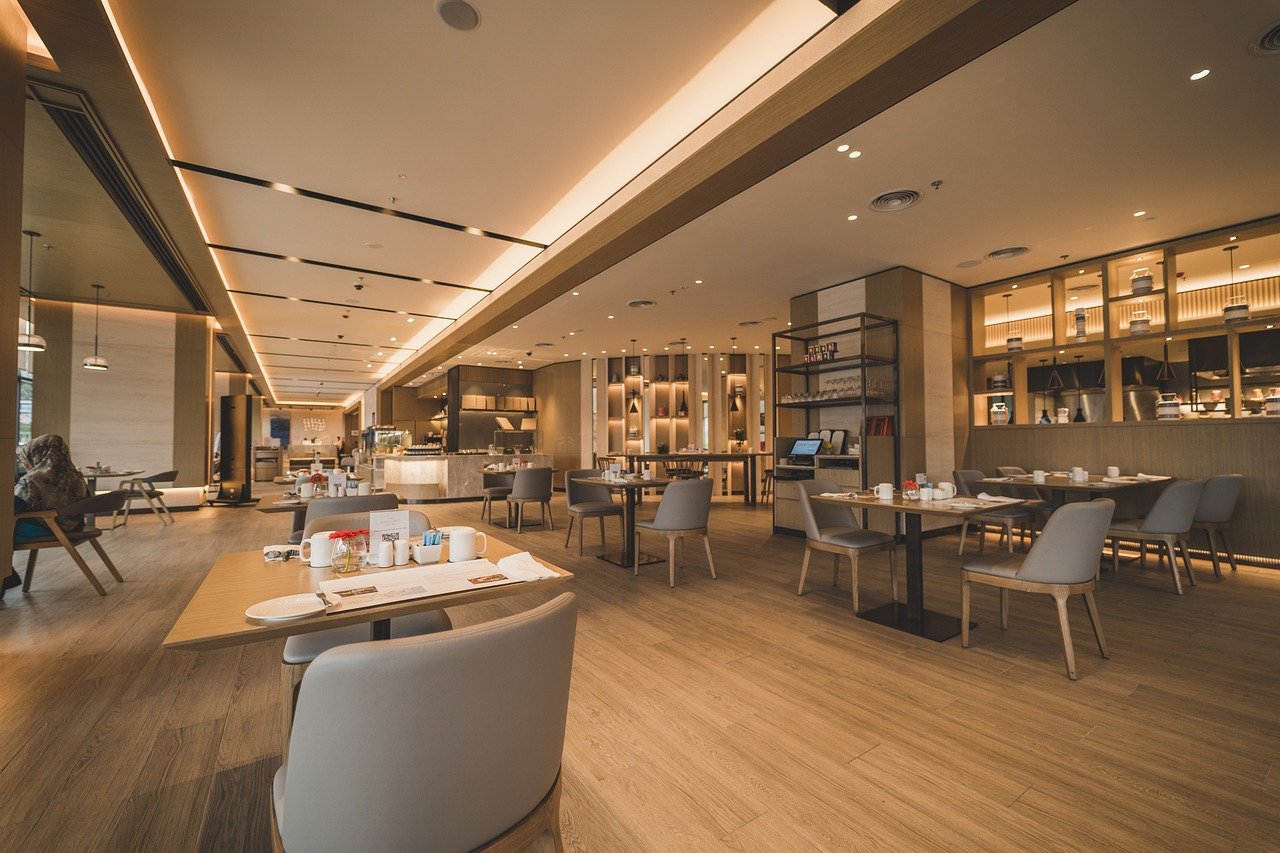Top 10 Questions Restaurant Owners Have About Energy Management

Many restaurant owners are concerned about efficiency in energy management, especially those aiming to balance operational cost savings and environmental responsibility. While it’s a wide ocean to cast a net into, knowing the right questions can help you narrow everything down to make every penny in every investment count.
We’ve compiled the top ten questions of restaurant owners we’ve worked with in the past to give you a leg-up on what aspects of energy management you can allocate your attention and resources to, along with solutions that we at GlacierGrid can provide to your business:
1. How can I reduce my restaurant's energy costs?
Reducing energy costs involves a multifaceted approach, focusing primarily on high-consumption areas such as HVAC and refrigeration.
For example:
Upgrading to energy-efficient appliances, conducting regular maintenance to ensure optimal performance, and adopting smart systems for energy management can lead to significant savings.
GlacierGrid provides a sophisticated solution that allows restaurant owners to manage energy intelligently and easily. By leveraging real-time data, owners can make informed decisions that reduce energy consumption and lower costs, all while maintaining the comfort and experience of guests.
2. Is it possible to monitor energy usage in real-time?
Monitoring energy usage in real-time is possible and essential for effective energy management. By integrating IoT devices and smart technology, restaurant owners can gain instant access to their energy consumption data. This enables immediate adjustments and proactive energy use strategies.
GlacierGrid provides a comprehensive dashboard that visualizes energy data, allowing for precise monitoring and management. This level of control helps identify inefficiencies and areas for improvement, leading to more strategic energy use.
3. Can energy management help in reducing equipment maintenance costs?
Effective energy management extends beyond controlling energy use; it significantly impacts equipment maintenance costs. Ensuring that HVAC and refrigeration systems operate efficiently minimizes equipment wear and tear, prolonging their lifespan and reducing the frequency and cost of repairs.GlacierGrid's system incorporates alerts and reports, providing early warnings of potential equipment failures. This foresight allows for preventative maintenance, avoiding costly emergency repairs and ensuring continuous operation without interruption.
4. What impact does energy management have on sustainability?
Energy management plays a substantial role in promoting sustainability. By optimizing energy consumption, restaurants can significantly reduce their carbon footprint, contributing to environmental conservation. Sustainable practices resonate with consumers and enhance a restaurant's reputation.GlacierGrid focuses on sustainable energy management by optimizing operational efficiency, directly reducing energy waste, and promoting a more sustainable model. This commitment to sustainability is not just about cost savings—it's about participating in a global movement towards environmental responsibility.
5. What are the key considerations when choosing an energy management system for my restaurant?
Choosing the right energy management system (EMS) for a restaurant involves several critical considerations to ensure it meets the specific needs of the business while optimizing energy savings and operational efficiency. Here are the key factors restaurant owners should evaluate:-
Focus on HVAC system
The HVAC system is a significant source of energy consumption in restaurants. Given its substantial role in energy use within the restaurant, it's essential to select an EMS that specifically targets HVAC efficiency to maximize savings and performance. An effective EMS should provide precise control over the HVAC system. -
On-site and remote control
An EMS should offer on-site and remote control capabilities, allowing restaurant staff or management teams to adjust settings from anywhere. This flexibility ensures that energy use can be optimized in real-time, responding to the restaurant's immediate operational needs. -
User-friendly interface
The system should have an intuitive, easy-to-use interface that allows managers and owners to monitor and adjust settings without extensive training. This includes setting heating and cooling limits, managing peak demand times, and ensuring secure access to the system's settings.
6. What equipment consumes the most energy in my restaurant?
In most restaurants, the primary energy consumers are HVAC systems, refrigeration units, and kitchen appliances such as ovens and stovetops. These systems, while necessary for daily operations, can significantly impact your energy bills if they are not optimized for efficiency.
Identifying these high-consumption areas is the first step towards implementing energy-saving strategies, such as upgrading to energy-efficient models, scheduling regular maintenance, and utilizing energy management systems like GlacierGrid to monitor and control their usage effectively.
7. Why does my electricity bill keep rising, and how can I counteract this trend?
Electricity bills can rise due to various factors, including increased energy rates, inefficient equipment, and changes in operational practices. To counteract this trend, restaurant owners can conduct energy audits to identify inefficiencies, invest in energy-efficient appliances, and adopt energy management systems that provide real-time data and control over energy use.
GlacierGrid offers a solution that can help identify patterns in energy consumption, allowing for targeted interventions to reduce energy use and lower electricity bills.
8. How can I engage my staff in energy-saving practices?
Engaging your staff in energy-saving practices involves education and creating a culture of sustainability within your restaurant. Start by providing training on the importance of energy efficiency and how simple actions can make a significant difference.
Implementing an energy management system like GlacierGrid can empower staff by giving them tools and insights to contribute actively to energy-saving efforts. Recognize and reward staff contributions to encourage ongoing commitment to energy efficiency.
9. Can energy management systems adapt to my restaurant's specific needs?
Yes, modern energy management systems are designed to be flexible and adaptable to a wide range of operational needs and settings.GlacierGrid, for example, offers customizable solutions that can tailor energy-saving strategies to your restaurant's specific requirements. Whether adjusting temperature settings based on occupancy, managing peak energy demand, or optimizing equipment use, these systems provide the versatility needed to address your restaurant's unique energy management challenges.
10. What are the financial benefits of investing in an energy management system?
Investing in an energy management system can deliver significant financial benefits over time. Restaurant owners can lower their utility bills by reducing energy consumption, directly impacting the bottom line. Additionally, monitoring and maintaining equipment efficiently can extend its lifespan and reduce maintenance costs.Systems like GlacierGrid offer immediate savings through energy efficiency and contribute to long-term financial sustainability by improving operational practices and reducing waste.
It all boils down to one thing: energy management is a must-have
By considering these factors, restaurant owners can select an energy management system that reduces their carbon footprint and energy consumption and delivers tangible financial benefits.
Addressing these questions reveals that effective energy management is about reducing costs, enhancing operational efficiency, ensuring equipment longevity, and contributing to sustainability.
Solutions like GlacierGrid play a necessary role in achieving these goals, offering advanced technology and support to help restaurant owners navigate the complexities of energy management.

Interested in reducing operational costs and maximizing your bottom line?
Additional Resources:
- What is Energy Management? | GlacierGrid FAQ
- How IoT Can Help with Energy Management Systems? | WebbyLab BLog
- 5 Energy Management Trends Foodservice Businesses Will Adopt this 2024 | GlacierGrid Blog
- Achieve Your Green Restaurant Goals, Part 1: Perform an Energy Audit | Intermix Blog
- Knowing What You're Monitoring: 4 Common Energy Terma Decoded | GlacierGrid Blog








